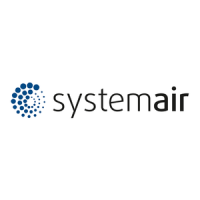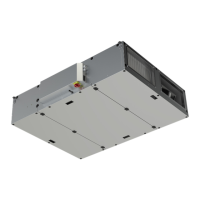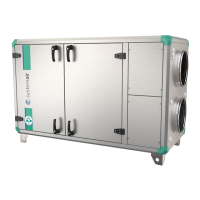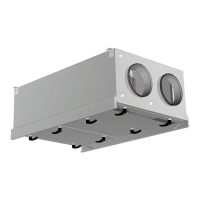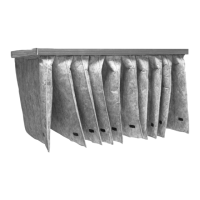32
Freshman Series - Owner's Manual - Installation, Operation, and Service Instruction - Version 1.1 EN
Troubleshooting Guide
8.0 Troubleshooting Guide
8.1 General Information
Your Changeair Classroom Air Handling Unit has been manu-
factured with great care and top rated quality control. Should
you experience problems with the operation of your Change-
air Classroom Air Handler, follow one or more of the proce-
dures below.
1. Consult a qualied service technician, or call your
Changeair sales agent to receive the name of a manufac-
ture approved service company.
2. Determine the nature of the problem. For either a
sequence of operation/control issue or mechanical prob-
lems, follow the appropriate steps that follow.
8.2 Controls and Mechanical Issues
For Control related Problems:
• Locate and record the manufacturer name, model and
serial numbers of the control device in question.
• Refer to the supplied control “Owner/Operators” manual
for assistance for programming or technical support lines
available in your region.
• Literature and technical support are available for LON or
BACNET controllers supplied with the unit through your
Changeair representative. For all other controller, contact
the controls contractor assigned with this product.
For Mechanical related Problems:
• Check the maintenance schedules to ensure that all
cleaning schedules are up to date and air lters have
been cleaned regularly.
• Use the Trouble Shooting Guide to diagnose the
problems.
• Replace any parts with original equipment replacement
parts available through your representative.
• Should you need further assistance, locate the unit serial
plate and record the Serial and Model Numbers and
voltage. With this information call your representative
and request the technical support or service department.
Changeair is not responsible for injury to untrained or unauthorized personnel who
attempt to do repairs based on the trouble shooting procedures outlined in this section.
8.3 Controls
Control of the unit is achieved through an external device,
which is generally termed “thermostat”. The complexity of
the control is a wide range from a simple mercury switch to a
computerized system of information monitoring room condi-
tions to process its control.
8.4 Internal Controls and Their Function
Temperature
The economizer board monitors mixed air temperature via a
mixed air temperature sensor which controls the damper. If
the mixed air temperature drops below 59°F (15°C) or 50°F
(10°C) during cool cycle, the damper will close to minimum
position (pot adjustable). This is a low mixed air ambient
temperature protection. When the mixed air temperature
rises above 59°F (15°C) or 50°F (10°C) during cool cycle
the damper returns to normal position (pot adjustable). This
process may be repeated, ensuring that your classroom unit
will heat the room space in cases where there is excessive
building heat loss or extreme outdoor temperatures while
still providing maximum fresh air ventilation. Outside air
temperature is also monitored, see “Compressor Protection”.
Compressor Protection (RA Models)
The economizer board monitors the outside temperature via an
outside temperature probe, and provides outside temperature
lockout for the mechanical cooling cycle. This is preset at 63°F
(15°C) and will not allow compressor to start when the outside
temperature is below this threshold. Below this threshold the
economizer will free cool.
Fan Motors Thermal Overload Protection
All fan motors have internal thermal overload protection. The
motor will automatically restart when it has cooled down.
Fuses
Inside the main electrical box there are line voltage fuses
protecting all internal components against breakdown, wiring
shorts etc,. These do not reset automatically, consult a service
technician to replace these fuses.
Electric Heat
All electric resistance elements units have two levels of
protection. A high temperature thermal cut-out disc which
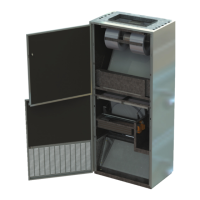
